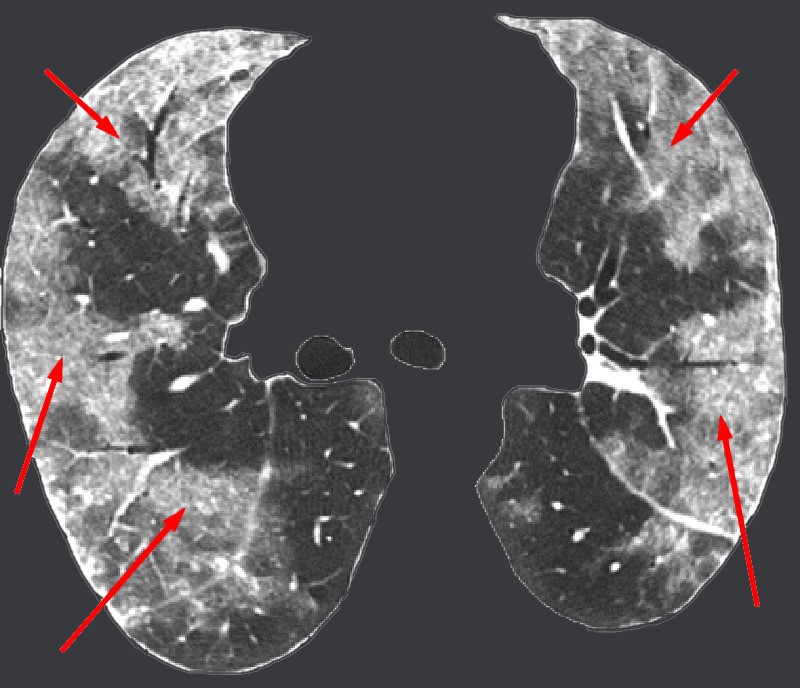Due to infection or another chronic interstitial disease, you may develop a hazy area of increased attenuation in your lung. Ground-glass opacity (GGO) is the descriptive term used to refer to this hazy area. It usually has preserved vascular and bronchial markings as well, and may well be the result of an acute alveolar disease. Keep reading to find out more about ground glass opacities and some specific treatment options.
What Is Ground Glass Opacity?
GGO is basically a radiological finding in CT scans. It will appear as an area of hazy opacity that does not hide the underlying pulmonary vessels or bronchial structures on your lungs. Pure ground glass opacities do not have solid components, but you can also develop part-solid GGOs that are a combination of both GGO and a solid component. Due to the availability of better technology and widespread use of computed tomography (CT), it is quite common now to encounter pulmonary nodules with GGO in routine clinical practice.

It is worth pointing out that ground-glass opacities are not associated with obscured underlying vessels; however, there are cases where underlying vessels are obscured but they are known as consolidation. GGOs sometimes reflect thickening of the alveolar interstitium as well as the thickening of alveolar walls. Cells or fluid in the alveolar spaces is also noticed when GGOs are present.
Ground Glass Opacity and Lung Cancer
As mentioned, GGOs can be the outcome of many different types of diseases and illnesses. They could be a manifestation of certain clinical features, including benign conditions and malignancies. In case, GGOs are with lesions that won't go away, this might indicate lung cancer in its early stages. The availability of low-dose CT screening has helped bring a 20% decrease in mortality from lung cancer. It helps identify patients with a greater risk of developing cancer.
What Diseases Do Ground Glass Opacities Indicate?
Ground glass opacities (GGOs) may indicate a variety of acute, chronic, or other diseases. For instance:
- Acute Disease: GGOs may represent pneumocystis pneumonia (PCP), acute interstitial pneumonia, viral pneumonia, hypersensitivity penumonitis, acute eosinophilic pneumonia, or early interstitial lung disease.
- Chronic Disease: This may represent hypersensitivity pneumonitis, and the conditions include alveolar proteinosis, bronchoalveolar carcinoma, interstitial lung disease, and sarcoidosis.
- Other Diseases: The appearance of GGOs usually indicates PCP in immunocompromised patients, but this may also happen due to pulmonary hemorrhage, drug reactions, and lymphoma.
Surgical Resection for Ground Glass Opacity in Lungs
Lobectomy with dissection of the mediastinal lymph nodes and ipsilateral hilar is the standard treatment option for non-small cell lung cancer. It is important to understand that some GGOs don't change their size for years, while others grow their solid components over time. It is not easy to determine if the GGO-predominant lesions can be or should be surgically resected. A 3-year observation period is used as a benchmark to determine if your GGOs will grow over time or they will stay the same.
When Is It Appropriate to Surgically Resect the Lesion?
The thing is that GGO-predominant lesions also include malignancies, which is why it is important to decide if the lesion should be resected or not. The Fleischner Society has recently proposed recommendations for better management of ground glass opacities. They have suggested that surgical resection or biopsy should only be used when the solid component is larger than 5mm.
